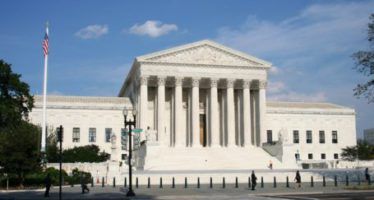Ending Earmarks Saved CA Schools
SEPT. 19, 2010
By WAYNE LUSVARDI
The prevailing public media perception is that raiding redevelopment agency funds in 2010 saved California’s public schools from devastating funding cutbacks. Actually, a little-known piece of legislation in 2009 saved the public schools in 2010 by cutting out the “corruption tax” in California’s public school formula.
Faced with another large state budget deficit and a shortfall of tax revenues for public schools in 2009, an almost unknown piece of legislation, State Assembly Bill ABX-4-2, removed what might be called the “corruption tax” component from the state school funding formula and plugged the fictional school-funding gap. ABX-4-2-6 was also the legislation that authorized taking $2 billion in budget reserves from redevelopment agencies to fund public schools in 2010.
Contrary to media perceptions, redevelopment agency funds did not plug the state public school funding gap because such funds merely offset the use of other state revenues for schools. Raiding redevelopment agency funds relieved the state budget crunch but had no net effect on the level of school funding which is mandated at 40 percent of the state general fund budget.
Under State Assembly Bill ABX-4-2 (Assemblywoman Noreen Evans, Majority Whip, 2009) as part of the state budget reconciliation for 2010-11, 40 of the former 60 “categorical” or “restricted” school programs funded by the state were converted into a “flex” fund that could be spent either on the old “restricted” programs and/or diverted to core curriculum classroom expenses.
In other words, state school funds that were formerly dedicated to special interests (library improvement, arts and music, professional development, deferred building maintenance, physical education, American Indian Education Centers, oral health assessments, school safety, adult education, etc.) could be flexibly spent on what each school district decided after a mandatory public hearing was held.
Stated more bluntly, the state budget crisis forced the Legislature’s hand so that buying the votes of school librarians, phys ed teachers, art and music teachers, American Indian educators, school dentists, school building maintenance personnel, etc., had to come to a stop once the corrupt game of musical chairs ended. Once the music stopped it was up to local school districts to decide what priorities to be funded. In the Pasadena Unified School District, for example, school busing to a magnet school was eliminated but music and arts programs were retained.
In May 2010, some school districts in wealthy areas passed school parcel taxes to plug a mostly fictional state school-funding gap. However, all of those schools passing parcel taxes to plug operating cost shortfalls were “Basic Aid” districts that fund most of their school operations from local property taxes rather than state revenues. School districts like Pasadena that mostly depend on state funding failed to pass parcel taxes. The failure of parcel taxes to pass in state-funded school districts was mainly due to local anti-tax efforts, not media or school district disclosure that the public school budget shortfall was mainly fictional and that parcel taxes would only keep any “corruption tax” premium in place.
According to a California Legislative Analyst Office report (no longer posted online), 60 percent of the former restricted state school funds have been shifted by local school districts away from funding special interests to funding direct K-12 classroom. And about 80 percent of surveyed school districts have continued funding for arts and music and 90 percent have continued funding for school library improvement under the new more flexible school budget reforms despite overall school funding cutbacks. This is hardly the catastrophe described by teachers unions, school districts, PTAs, non-profit educational support groups and local newspapers around the state.
Moreover, under ABX-4-2 the amount of “unrestricted” funds each school district gets is “locked” at the higher 2008-09 level. This benefits older school districts with declining enrollments at the expense of growing districts (mainly in red county areas). This policy raised no objections from liberals who typically like equality. And those older school districts that “made out like a bandit” with a larger share of “unrestricted” school funding have remained silent along with the media about this policy.
Many anti-tax groups that opposed the use of school parcel taxes to fund operating costs of public schools have focused on the “culture of corruption” in local school districts without understanding the state Legislature’s complicity in creating an incentive system for it to flourish.
Conversely, local school parcel tax proponents have fallaciously focused on cutbacks in “unrestricted” school funding while not divulging that such funding has been liberated for core classroom use and teacher’s salaries. Many core classroom teachers may have been hoodwinked into erroneously believing that the continuation of former “categorical” state funding programs with budget “lock-ins” for special interests would undercut their salaries.
Apparently, both sides were apparently wrong about the ramifications of the shortfall in state funding for public schools, the raiding of redevelopment funds for schools, and the use of local parcel taxes to plug a mythical funding gap.
Local school districts did suffer a reduction in the “unrestricted” portion of their general funds, but this was apparently entirely offset by making “restricted” funds more flexible. For example, the Pasadena Unified School District experienced a $35 million reduction in state funding in its general fund in 2010. But contrary to its 2009 announcement of 160 teacher layoffs, it suffered no actual teacher layoffs for the start of the 2010 school year. If the Pasadena School District is representative of school districts in the entire state, the “corruption premium” reflected about 34 percent of the unrestricted general fund budget for K-12 public schools.
Extrapolated to the entire state budget, the elimination of the “corruption premium” on school taxes would equate to almost $11 billion. Without ABX-4-2 the state budget deficit for 2020 would have ballooned from about $21 billion to $32 billion by this writer’s calculation. Which begs the question: How much of state government is still loaded with similar “corruption premiums?”
The state LAO study has recommended that the amount of “unrestricted” funding for public schools be expanded by the following further reforms:
1. Relaxing the cap on the number of students in grades K-3.
2. Shifting transportation funding for the Hard to Serve program from “restricted” to “unrestricted” because it is based on a “use-it or lose-it” rule that discourages cost-effectiveness. Last year, the HTS transportation program was provided for by special funds (federal stimulus funds?) and could not be converted into discretionary funding. The state LAO “sees no reason to continue” this program as “restricted.”
3. Amending Prop 49 for After School Education and Safety (ASES) programs by a ballot measure so that school districts are not forced to increase class sizes and decrease instructional days (furloughs) “while supplemental after school activities remain untouched.”
4. Consolidate the five “fractured” Career Technical Education (CTE) programs comprising $427 million by “eliminating” most program requirements (again serving special interests?).
5. Removing contracting-out restrictions. Under existing rules (quote): “contracting for services cannot be done solely for achieving savings … and cannot result in the lay off or demotion of existing district employees.” (i.e., more special interests and vote buying).
6. Remove restrictions that force school districts to pay former teachers their pre-layoff salary rate if they serve as a substitute teacher for 20 days in a 60-day period. School districts that use revolving door temp teachers while core teachers are sent out of the classroom undergoing “professional development” are ripe for this abuse.
7. Reduce the “programmatic overlap, confusion, and administrative hassles” between the state Quality Education Investment Act (QEIA, SB1133, 2006) and Federal School Improvement Program (saving more than $700 million over 3 years).
8. Eliminate 40 mandates imposed on K-12 “restricted” funding programs, “many of which do almost nothing to benefit students and educators.”
Do you remember the parable of the fish and the loaves in the Christian religious scriptures where a famous religious person redistributed two fish and five loaves of bread to feed 5,000 people for Jewish Passover? ABX-4-2 has miraculously done something like this by relaxing the earmarks for special interests in the state budget for school funding. Those who believe in true just redistribution should cheer.
Corruption and bureaucratic inefficiency is a tax within a tax. Call it the “corruption premium.” Instead of promising to pass local parcel taxes to plug mostly fictional budget gaps, local school districts should instead lobby the Legislature for more school budget reforms further reducing the budget featherbedding of special interests per the recommendations of the Legislative Analyst’s Office. The lesson of the California Assembly Bill ABX-4-2 is sometimes less school funding is really more.
Related Articles
Brown Cut Only 1% of School “Earmarks”
JUNE 7, 2011 By WAYNE LUSVARDI The word “mandate” sounds like something absolutely essential and mandatory. However, when it comes
Kamala Harris not likely to be Supreme Court nominee
While Kamala Harris has a good shot at becoming the next U.S. senator from California, she has little shot of
Pro-biz group releases “job-killer” and “job-creator” lists
The annual “job-creator” and “job-killer” lists are out — 31 top priorities of the California Chamber of Commerce. The pro-business group,




